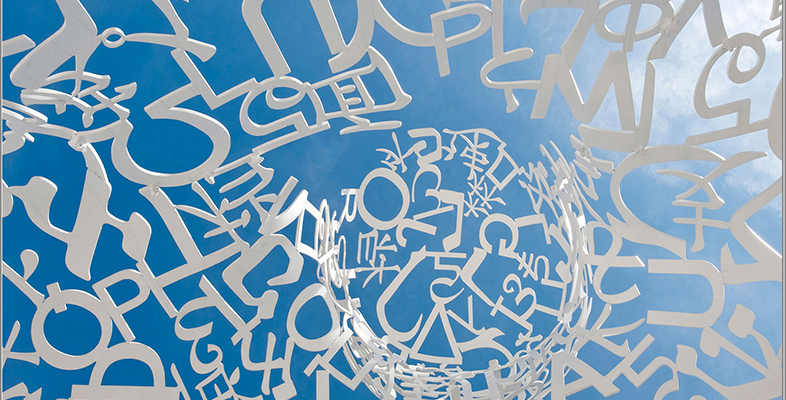5.2.1 Two different professions
Insofar as translation means turning a message from one language into another, translating and interpreting can both be defined as types of translation. However, there are also some differences between the two modalities. While a translator may occasionally act as an interpreter and vice versa, these are two distinct professions with very different demands.
The following extract is a personal account by Sarah Halys, a professional translator, who describes her experiences the first time she was asked to step out of her specialist area and do an interpreting job.
Activity 38
Read the text below. How does what Sarah Halys says modify your understanding of the difference between translation and interpreting (interpretation)?
Reading 4 Translation vs interpretation
Many people don’t realize there’s a difference between ‘translation’ and ‘interpretation’. Even people who work with translators all the time will sometimes ask us, ‘Can you translate at a meeting I’m holding?’ And I’m sure interpreters frequently get handed documents and asked to translate them. Perhaps it’s easier to go from interpretation to translation; I wouldn’t know and wouldn’t like to assume. However, as a professional translator I can definitely say that interpretation is so unlike translation as to be an entirely different proposition and much more difficult for me.
So what is the difference between ‘translation’ and ‘interpretation’? ‘Translation’ refers to the translation from one language to another of something which is frozen in time: a book, a TV show, a letter, a play, a speech someone has already delivered which is recorded and then given to the translator in its entirety. ‘Interpretation’ is a real-time exercise – when you interpret, conversation, speech, etc. is actually taking place, and as it happens you are taking what is said in Language A and communicating it in Language B. It may be that you are interpreting at the same time as others are speaking, or it may be that you wait until the end of a chunk of speech and then interpret it into another language while the speaker pauses to wait for you.
Although many people seem to regard ‘translation’ and ‘interpretation’ as the same or at least activities that the same person would do, and although there are people who do both translate and interpret, the two are radically different both experientially and practically.
Just recently I had my first interpretation gig. I had the honor of interpreting at two Question & Answer panels and two autograph sessions for Mr Yoshitaka Amano at Oni-Con [a Japanese pop culture convention] 2006 in Houston, Texas. I think a large part of the reason why I was approached about the job (about 48 hours before the con[vention] began) was that assumption so many people have that translators interpret and vice versa. However, I took the job and am glad I did so; it was fascinating.
Discussion
The main way in which Halys modifies our understanding of the differences between translation and interpreting is that she sees the former as working with material that is fixed and ‘frozen in time’ and the latter as taking place in ‘real time’. So, the language in a film, despite being spoken, would be translated rather than interpreted into another language, because the translator is able to view and review the language used rather than having to interpret it as it is uttered.
Activity 39
Look at the following questions and in answer to each of them write down the main differences between translation and interpreting. If you cannot answer them all, look up the answers before reading the comment below.
1 What channel is used?
Answer
Translation: Visual (the written word)
Interpreting: Auditory (the spoken word)
2 What is the time span?
Answer
Translation: There is time to think, consult dictionaries, etc.
Interpreting: Happens in real time
3 Is there an opportunity to correct?
Answer
Translation: Yes
Interpreting: No
4 How high are the expectations with regard to accuracy?
Answer
Translation: Very high
Interpreting: Also high, but perfection is not expected
5 What skills are specific to this form of mediation?
Answer
Translation: Accurate, appropriate and clear writing style, spelling, time management to meet deadlines
Interpreting: Face-to-face interaction, memory, pronunciation and oral fluency
6 What is the typical working environment?
Answer
Translation: Desk job, can be done remotely. Now highly reliant on technology (e.g. databases)
Interpreting: Normally on location (conferences, meetings, etc.), with or without specialist equipment
Translators normally work by themselves with a text that is fixed and complete. They can think at length about language choices, look things up, take breaks and revise what they have written. Interpretation, on the other hand, generally takes place in a group of people and the interpreter must interact with these people in real time. This means that whereas a translation can be fine-tuned, the instant turnaround required of an interpreter means that they must go straight to the core meaning of the language to be mediated.
While a translator must be good at writing, possibly in different specific styles, an interpreter must have the ability to speak to people, perhaps from different backgrounds and in different settings. Interpretation may also involve speaking in multiple languages – in other words, within one conversation a Spanish/English interpreter may have to switch between interpreting Spanish-to-English to Person A and English-to-Spanish to Person B. Some translators may also work in both directions but this is highly unusual. Interpretation also poses particular challenges for the concentration, memory and note-taking skills of the interpreter. In simultaneous interpretation they must listen and speak at the same time; in consecutive interpretation, the statement to be interpreted may be long and complex before there is a break to repeat it in the target language. You will learn more about these two kinds of interpreting in the next section.
